Paru il y a 48 heures, ce NIE (National Intelligence Estimate) défraie déja la chronique. Préparé, comme le veut la tradition pour les NIE, de concert entre les 16 services de renseignements américains (Citons par exemple le Homeland Security, la Central Intelligence Agency, la National Security Agency, le Defense Intelligence Agency, ainsi que le service de renseignement du Ministère de l'Energie US ou le service de renseignements du Département d'Etat) et intitulé "Iran: Nuclear Intentions and Capabilities" en date de novembre 2007, ce rapport indique entre autres que si l'Iran avait bien un programme nucléaire , il a été arrêté en 2003. A vos commentaires!
Key Judgments
A. We judge with high confidence that in fall 2003, Tehran halted its nuclear weapons
program1; we also assess with moderate-to-high confidence that Tehran at a minimum is
keeping open the option to develop nuclear weapons. We judge with high confidence
that the halt, and Tehran’s announcement of its decision to suspend its declared uranium
enrichment program and sign an Additional Protocol to its Nuclear Non-Proliferation
Treaty Safeguards Agreement, was directed primarily in response to increasing
international scrutiny and pressure resulting from exposure of Iran’s previously
undeclared nuclear work.
• We assess with high confidence that until fall 2003, Iranian military entities were
working under government direction to develop nuclear weapons.
• We judge with high confidence that the halt lasted at least several years. (Because of
intelligence gaps discussed elsewhere in this Estimate, however, DOE and the NIC
assess with only moderate confidence that the halt to those activities represents a halt
to Iran's entire nuclear weapons program.)
• We assess with moderate confidence Tehran had not restarted its nuclear weapons
program as of mid-2007, but we do not know whether it currently intends to develop
nuclear weapons.
• We continue to assess with moderate-to-high confidence that Iran does not currently
have a nuclear weapon.
• Tehran’s decision to halt its nuclear weapons program suggests it is less determined
to develop nuclear weapons than we have been judging since 2005. Our assessment
that the program probably was halted primarily in response to international pressure
suggests Iran may be more vulnerable to influence on the issue than we judged
previously.
B. We continue to assess with low confidence that Iran probably has imported at least
some weapons-usable fissile material, but still judge with moderate-to-high confidence it
has not obtained enough for a nuclear weapon. We cannot rule out that Iran has acquired
from abroad—or will acquire in the future—a nuclear weapon or enough fissile material
for a weapon. Barring such acquisitions, if Iran wants to have nuclear weapons it would
need to produce sufficient amounts of fissile material indigenously—which we judge
with high confidence it has not yet done.
C. We assess centrifuge enrichment is how Iran probably could first produce enough
fissile material for a weapon, if it decides to do so. Iran resumed its declared centrifuge enrichment activities in January 2006, despite the continued halt in the nuclear weapons
program. Iran made significant progress in 2007 installing centrifuges at Natanz, but we
judge with moderate confidence it still faces significant technical problems operating
them.
• We judge with moderate confidence that the earliest possible date Iran would be
technically capable of producing enough HEU for a weapon is late 2009, but that this
is very unlikely.
• We judge with moderate confidence Iran probably would be technically capable of
producing enough HEU for a weapon sometime during the 2010-2015 time frame.
(INR judges Iran is unlikely to achieve this capability before 2013 because of
foreseeable technical and programmatic problems.) All agencies recognize the
possibility that this capability may not be attained until after 2015.
D. Iranian entities are continuing to develop a range of technical capabilities that could
be applied to producing nuclear weapons, if a decision is made to do so. For example,
Iran’s civilian uranium enrichment program is continuing. We also assess with high
confidence that since fall 2003, Iran has been conducting research and development
projects with commercial and conventional military applications—some of which would
also be of limited use for nuclear weapons.
E. We do not have sufficient intelligence to judge confidently whether Tehran is willing
to maintain the halt of its nuclear weapons program indefinitely while it weighs its
options, or whether it will or already has set specific deadlines or criteria that will prompt
it to restart the program.
• Our assessment that Iran halted the program in 2003 primarily in response to
international pressure indicates Tehran’s decisions are guided by a cost-benefit
approach rather than a rush to a weapon irrespective of the political, economic, and
military costs. This, in turn, suggests that some combination of threats of intensified
international scrutiny and pressures, along with opportunities for Iran to achieve its
security, prestige, and goals for regional influence in other ways, might—if perceived
by Iran’s leaders as credible—prompt Tehran to extend the current halt to its nuclear
weapons program. It is difficult to specify what such a combination might be.
• We assess with moderate confidence that convincing the Iranian leadership to forgo
the eventual development of nuclear weapons will be difficult given the linkage many
within the leadership probably see between nuclear weapons development and Iran’s
key national security and foreign policy objectives, and given Iran’s considerable
effort from at least the late 1980s to 2003 to develop such weapons. In our judgment,
only an Iranian political decision to abandon a nuclear weapons objective would
plausibly keep Iran from eventually producing nuclear weapons—and such a decision
is inherently reversible.
F. We assess with moderate confidence that Iran probably would use covert facilities—
rather than its declared nuclear sites—for the production of highly enriched uranium for a
weapon. A growing amount of intelligence indicates Iran was engaged in covert uranium
conversion and uranium enrichment activity, but we judge that these efforts probably
were halted in response to the fall 2003 halt, and that these efforts probably had not been
restarted through at least mid-2007.
G. We judge with high confidence that Iran will not be technically capable of producing
and reprocessing enough plutonium for a weapon before about 2015.
H. We assess with high confidence that Iran has the scientific, technical and industrial
capacity eventually to produce nuclear weapons if it decides to do so.
1 For the purposes of this Estimate, by “nuclear weapons program” we mean Iran’s nuclear weapon design
and weaponization work and covert uranium conversion-related and uranium enrichment-related work; we
do not mean Iran’s declared civil work related to uranium conversion and enrichment.
Key Differences Between the Key Judgments of This Estimate on Iran’s Nuclear
Program and the May 2005 Assessment
2005 IC Estimate
Assess with high confidence that Iran
currently is determined to develop nuclear
weapons despite its international
obligations and international pressure, but
we do not assess that Iran is immovable.
We have moderate confidence in projecting
when Iran is likely to make a nuclear
weapon; we assess that it is unlikely before
early-to-mid next decade.
Iran could produce enough fissile material
for a weapon by the end of this decade if it
were to make more rapid and successful
progress than we have seen to date.
2007 National Intelligence Estimate
Judge with high confidence that in fall 2003,
Tehran halted its nuclear weapons program. Judge
with high confidence that the halt lasted at least
several years. (DOE and the NIC have moderate
confidence that the halt to those activities
represents a halt to Iran's entire nuclear weapons
program.) Assess with moderate confidence
Tehran had not restarted its nuclear weapons
program as of mid-2007, but we do not know
whether it currently intends to develop nuclear
weapons. Judge with high confidence that the halt
was directed primarily in response to increasing
international scrutiny and pressure resulting from
exposure of Iran’s previously undeclared nuclear
work. Assess with moderate-to-high confidence
that Tehran at a minimum is keeping open the
option to develop nuclear weapons.
We judge with moderate confidence that the
earliest possible date Iran would be technically
capable of producing enough highly enriched
uranium (HEU) for a weapon is late 2009, but that
this is very unlikely. We judge with moderate
confidence Iran probably would be technically
capable of producing enough HEU for a weapon
sometime during the 2010-2015 time frame. (INR
judges that Iran is unlikely to achieve this
capability before 2013 because of foreseeable
technical and programmatic problems.)
We judge with moderate confidence that the
earliest possible date Iran would be technically
capable of producing enough highly enriched
uranium (HEU) for a weapon is late 2009, but that
this is very unlikely.
 CURVEBALL
CURVEBALL Alan Foley Aujourd'hui ,il s'avére que les informations de "Curveball" étaient fausses. Débriéfé par le BND, le service de renseignement fédéral ouest-allemand, ses informations avaient été passées a la communauté US du renseignement. Les témoignages obtenus montrent bien, pourtant, que bien avant que l'Irak ne soit envahie, les informations de Curveball ne sont pas fiables. Témoignent en ce sens deux hauts responsables de la CIA a l'époque: Tyler Drumhueller dirigeait alors la Division Europe de l'Ouest de la Direction des Opérations de la CIA (Après avoir servi a Vienne comme Chef de station) et Alan Foley, ancien spécialiste de l'analyse des informations sur les armements soviétiques, qui en 2003 dirigeait le WINPAC (Weapons, Intelligence, Non-Prolifération and Arms Control Center) , une division analytique de la CIA chargée de l'analyse d'informations sur les armes , y compris chimiques ou biologiques.Pourtant, on utilisera les informations de Curveball, y compris lors du discours de Colin Powell.... Pour l'instant il n'a pas été possible de déterminer exactement ce qui s'était passé au niveau de la circulation de ses informations.
Alan Foley Aujourd'hui ,il s'avére que les informations de "Curveball" étaient fausses. Débriéfé par le BND, le service de renseignement fédéral ouest-allemand, ses informations avaient été passées a la communauté US du renseignement. Les témoignages obtenus montrent bien, pourtant, que bien avant que l'Irak ne soit envahie, les informations de Curveball ne sont pas fiables. Témoignent en ce sens deux hauts responsables de la CIA a l'époque: Tyler Drumhueller dirigeait alors la Division Europe de l'Ouest de la Direction des Opérations de la CIA (Après avoir servi a Vienne comme Chef de station) et Alan Foley, ancien spécialiste de l'analyse des informations sur les armements soviétiques, qui en 2003 dirigeait le WINPAC (Weapons, Intelligence, Non-Prolifération and Arms Control Center) , une division analytique de la CIA chargée de l'analyse d'informations sur les armes , y compris chimiques ou biologiques.Pourtant, on utilisera les informations de Curveball, y compris lors du discours de Colin Powell.... Pour l'instant il n'a pas été possible de déterminer exactement ce qui s'était passé au niveau de la circulation de ses informations.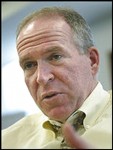
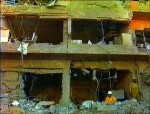 Dégâts causés par la voiture piégée le 13.11.1995
Dégâts causés par la voiture piégée le 13.11.1995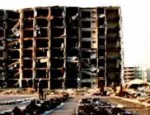 Les Tours Khobar peu après l'attaque terroriste
Les Tours Khobar peu après l'attaque terroriste
 Golan,avant de rejoindre les forces réservistes ,comme officier d'une unité de tanks.
Golan,avant de rejoindre les forces réservistes ,comme officier d'une unité de tanks.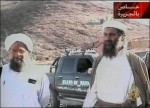 Ayman Al Zawahiri et Oussama Ben Laden
Ayman Al Zawahiri et Oussama Ben Laden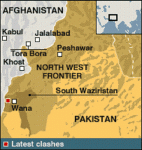 Carte montrant le Waziristan et sa proximité avec l'Afghanistan.C'est au Waziristan que se serait caché Ben Laden,selon toute probabilité.Si il est toujours en vie,ce dont on peut douter.
Carte montrant le Waziristan et sa proximité avec l'Afghanistan.C'est au Waziristan que se serait caché Ben Laden,selon toute probabilité.Si il est toujours en vie,ce dont on peut douter.
 Ali Asghari
Ali Asghari